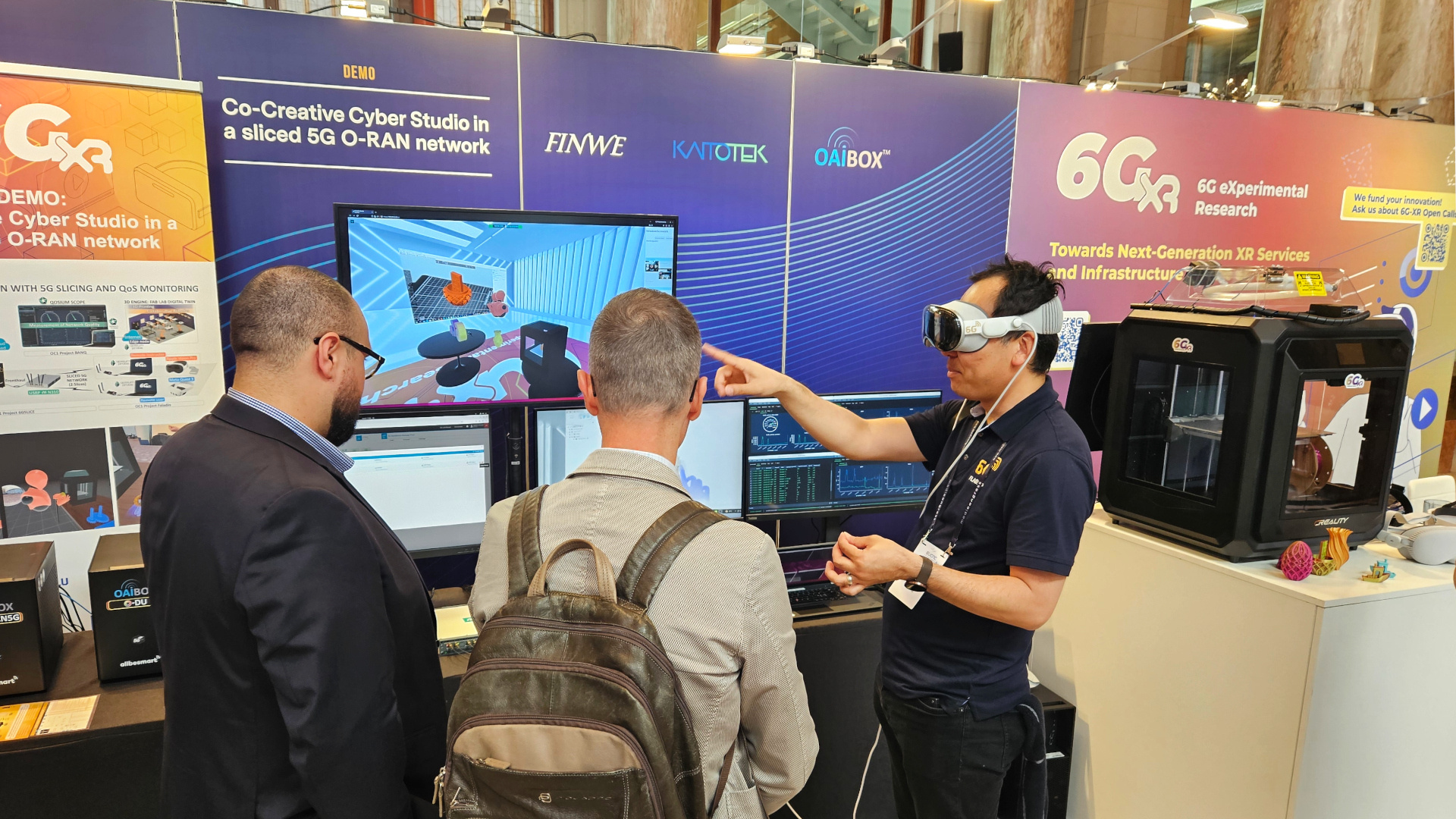
We showcased how to evaluate the benefits of a 5G O-RAN network with slicing features at EUCNC 2024. Qosium continuously monitored and visualized the QoS experienced by the XR applications.
June 5th, 2024
XRExtended Reality
Extended reality is an umbrella term being used to refer at least to terms such as augmented reality, virtual reality, and mixed reality. applications pose high demands on networks. They require low delay and packet loss with high throughput. Low QoSQuality of Service
Indicates the overall performance of the connection/network and its ability to serve applications. ruins the XR application user experience quickly. Emerging technologies, like network slicing, play a key role in satisfying these needs over mobile networks. Qosium, in contrast, provides pure performance data on how the network manages to serve these challenging applications.
We joined forces with the University of Oulu (Finland), Allbesmart (Portugal), and Finwe (Finland) for a live demonstration at EUCNC 2024, Antwerp, Belgium. The demonstration, coordinated by the University of Oulu, provided visitors with hands-on experience of the benefits of 5G slicing with XR applications. The application scenario was a 3D digital twin, provided by Finwe, for real-time co-creative fabrication processes involving VR glasses and a 3D printer. The 5G network was based on Allbesmart’s OAIBOX.
Qosium continuously monitored the QoS of the XR applications over their respective connections, using both sliced, prioritized, and best-effort channels. The measurements were carried out end-to-end, but more interestingly, the measurements were also taken between the VR glasses and the 5G core network. That is now possible, thanks to our new GTPGPRS Tunnelling Protocol
A group of IP-based communications protocols used to carry data within GSM, UMTS, LTE and 5G NR radio networks. decapsulation Linux kernel module, QGTPR, which enables Qosium Probe to measure the traffic inside a GTP tunnel efficiently. Qosium showed in real time how the network was performing under the highly variable traffic load of the XR applications. Qosium measurement caught even the slightest deviations in QoS immediately.
The demonstration was part of the European 6G-XR project. Kaitotek has successfully carried out a 6G-XR Open Call project, with a focus on enhancing and commissioning an automated passive measurement solution for project’s research facilities. The studied technologies will also assist bringing new, exciting features for Qosium, improving our solution further to existing and new R&D and industry customers.
